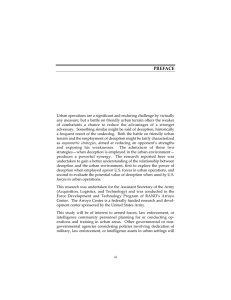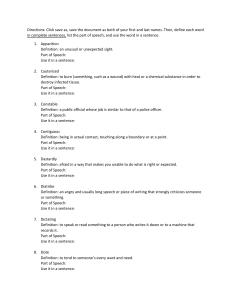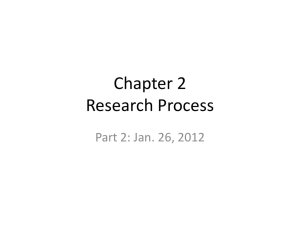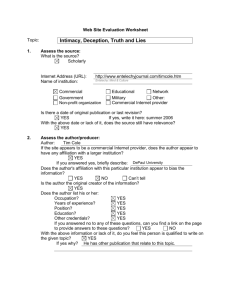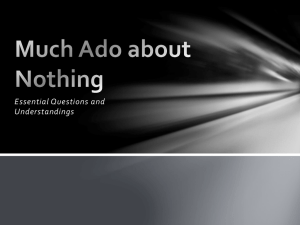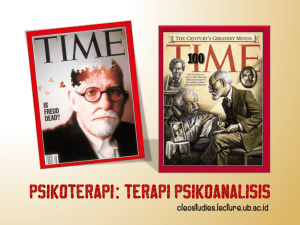SUMMARY
advertisement
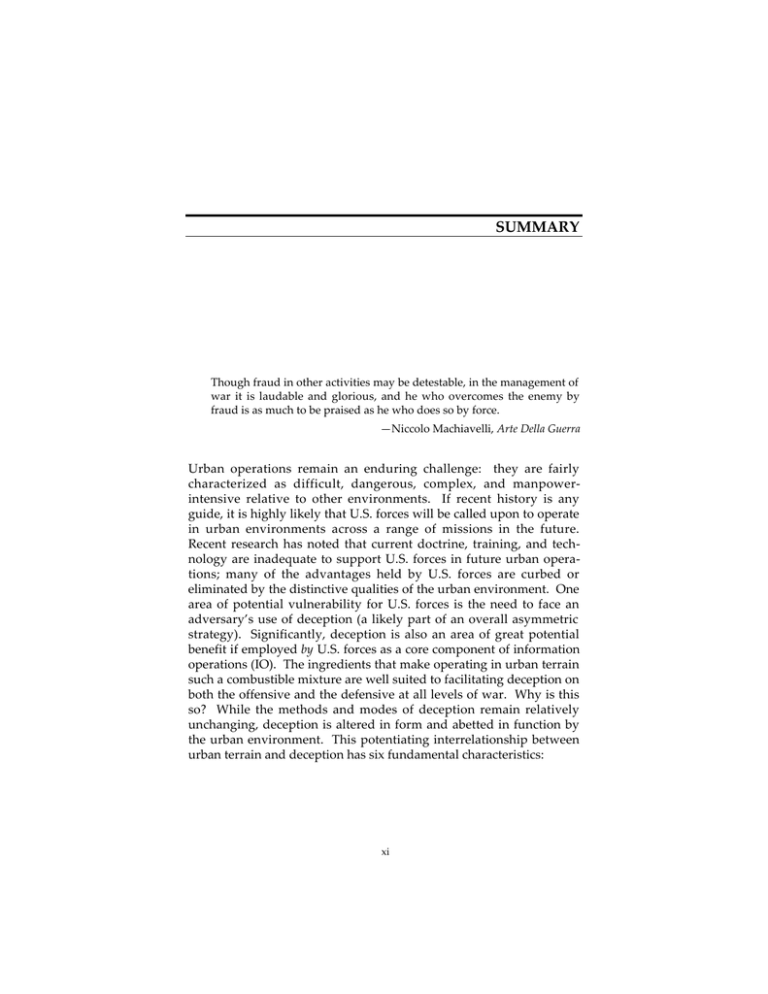
SUMMARY Though fraud in other activities may be detestable, in the management of war it is laudable and glorious, and he who overcomes the enemy by fraud is as much to be praised as he who does so by force. —Niccolo Machiavelli, Arte Della Guerra Urban operations remain an enduring challenge: they are fairly characterized as difficult, dangerous, complex, and manpowerintensive relative to other environments. If recent history is any guide, it is highly likely that U.S. forces will be called upon to operate in urban environments across a range of missions in the future. Recent research has noted that current doctrine, training, and technology are inadequate to support U.S. forces in future urban operations; many of the advantages held by U.S. forces are curbed or eliminated by the distinctive qualities of the urban environment. One area of potential vulnerability for U.S. forces is the need to face an adversary’s use of deception (a likely part of an overall asymmetric strategy). Significantly, deception is also an area of great potential benefit if employed by U.S. forces as a core component of information operations (IO). The ingredients that make operating in urban terrain such a combustible mixture are well suited to facilitating deception on both the offensive and the defensive at all levels of war. Why is this so? While the methods and modes of deception remain relatively unchanging, deception is altered in form and abetted in function by the urban environment. This potentiating interrelationship between urban terrain and deception has six fundamental characteristics: xi xii The Art of Darkness: Deception and Urban Operations • The scope of deceptions is greater in the urban environment than in any other; • The cacophonous “background noise” of urban environments hampers counterdeception faculties; • Cities offer a rich trove of materials with which to conduct deception; • Decisionmaking is generally worsened in urban environments relative to other environments; • The presence and proximity of noncombatants complicate the intelligence picture at all operational levels; • Urban clutter attenuates the leverage of technology. These six factors represent a considerable hindrance when facing adversary deception in built-up areas, but also a potentially great help to U.S. forces conducting urban operations themselves. Historically, deception has offered considerable leverage during urban operations. It may be both an enhancement to traditional military operations as well as an alternative to them. As such, it has a potential role in virtually every kind of U.S. and allied force mission. Although deception is recognized and respected as a potential source of great advantage for adversaries, it has probably been undervalued as a tool for friendly forces in doctrinal manuals and during training exercises, where it is often viewed as an ancillary activity. Moreover, doctrinal guidance pertaining to deception is often perfunctory boilerplate, even in the face of significant emerging technologies. Deception may exploit technology, but it does not always have to depend on it, thus presenting a tool available to the urban combatant in both high- and low-technology contexts. For those who wish to contend on the urban battlefield of the 21st century, it would be advisable to more fully consider deception from both predictive (what will we see?) and prescriptive (what should we do?) vantage points. Prediction requires a careful review and analysis of historical precedent, as well as embracing deception as an important component of urban exercises and simulations. Prescription means improving the training, methods, and technologies for integrating deception more fully into the operational framework—at every level of war.

